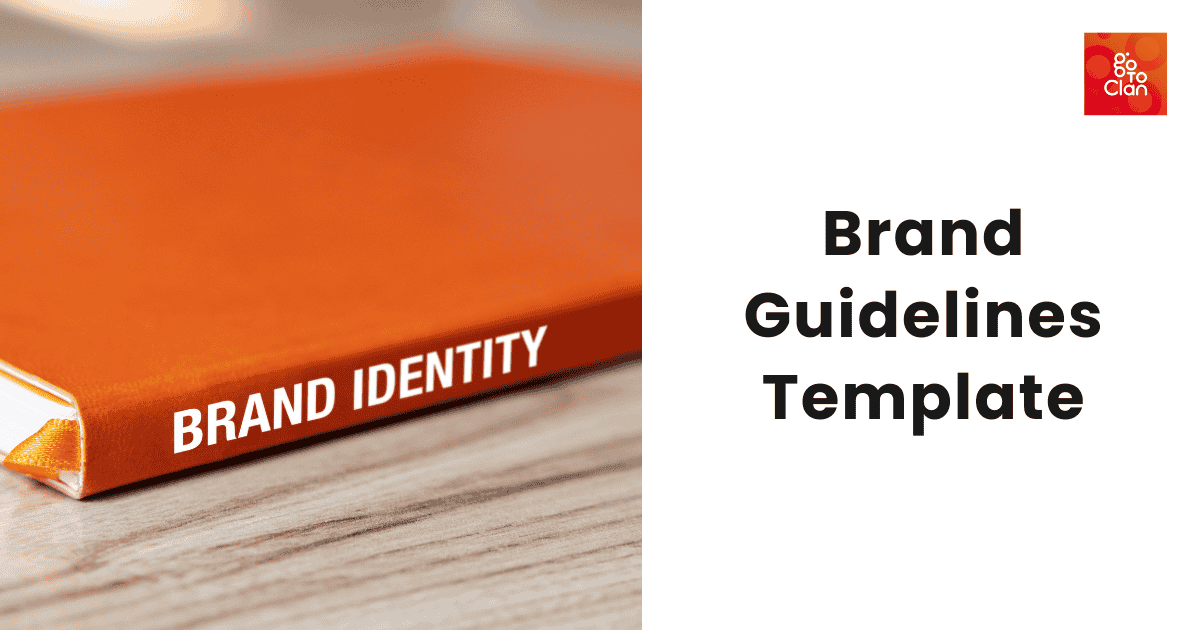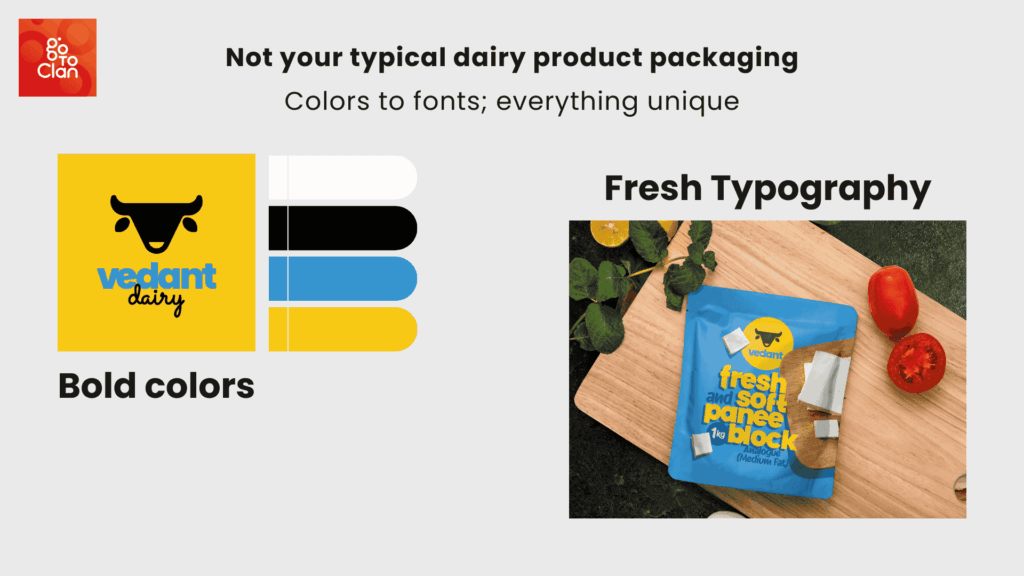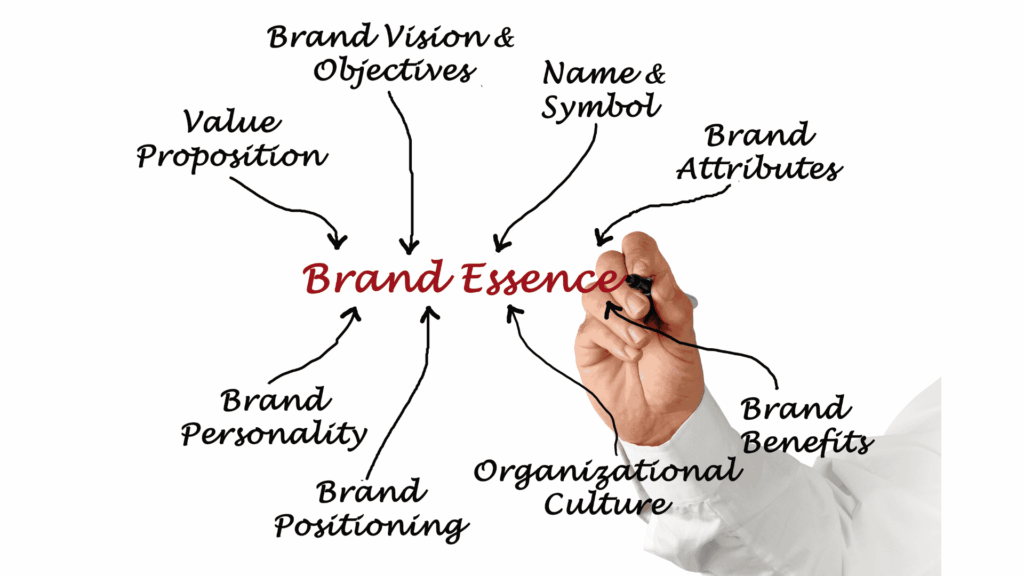
As the founder of a creative agency, I receive numerous requests for an aesthetic and impactful brand guidelines template. Every large-scale group owning multiple brands must have a fixed brand guidelines template.
Every brand has one thing in common: consistency. Hence, I make sure that I am able to connect every dot of a brand’s story throughout the entire brand guideline book template. From logos and colors to tone of voice and design elements, consistency builds trust and recognition.
A brand guideline book is a rulebook for your brand. It decides and conveys how a brand should be addressed, seen, and perceived. It not only clarifies the visual identity of the brand but also sets a communication tone. Before we talk more about the brand guidelines template, let’s see what a brand guideline book is all about.
What is a brand guideline book?
This book tells everyone how your brand should look, sound, and feel wherever it appears; on websites, social media, ads, packaging, or even office stationery. If you think that branding is all about sticking a logo on your notepad and calling it a day, then this blog is for you.
Think of this book like a dress code and personality guide for your brand:
- What logo to use (and what not to do with it)
- Which colors and fonts represent the brand
- How to use images and graphics
- What kind of words and tone to use when writing
In simple words, a brand guideline book has your brand’s entire personality details. Why is a brand guidelines template important? It allows your team, your stakeholders, your clients, and even you to portray your brand publicly. From your company’s office boy to the CEO, everyone should convey the same brand message.
Important Things to Include in Your Brand Guidelines Template
1. About the Guideline
In this part, introduce the purpose of the brand guideline book. Make it clear that this is a reference manual for the entire company, from marketing teams to external partners. Explain that it helps maintain consistency across all brand communications and prevents misuse of brand assets. The goal here is to align everyone under the same brand identity.
2. Importance of Branding
Use this section to highlight why branding matters for business growth. Talk about how consistent branding builds trust, creates recognition, and differentiates a company in a competitive market. You can also mention that strong branding improves customer recall and helps in storytelling. This sets the stage for why guidelines are worth the effort.
3. Logo Introduction (Story Behind the Logo)
In this part of a brand guidelines template, explain the meaning and thought process behind your logo. Share whether it reflects your company’s history, values, or industry. A short narrative makes the logo more relatable and memorable. This is not about design details. It’s about what your logo stands for in the eyes of your audience.
For example, we are all familiar with the iconic Instagram logo. When it launched in 2010, the logo resembled a detailed vintage camera icon, reflecting the app’s focus on photography. As the platform grew beyond just photos to include videos, reels, and stories, the logo also evolved. In 2016, Instagram introduced the minimalistic gradient icon we know today: simple, colorful, and modern. This shift wasn’t just about design; it symbolized the brand’s transition from a niche photo-sharing app to a global storytelling platform.
4. Logo Placement and Clear Space
Define how your logo should be placed in different contexts. Show the minimum clear space required around the logo so it never feels cramped. Mention standard placements for documents, presentations, packaging, and digital platforms. This prevents design mistakes and ensures a clean, professional look.
5. Logo Sizes
Provide specific rules for logo resizing. List down the minimum and maximum sizes for print and digital use, ensuring legibility across formats like business cards, websites, and billboards. This avoids distortion and guarantees consistency in scale.
6. Incorrect Use of the Logo
It is important to tell what not to do along with what to do. Examples may include: stretching the logo, changing colors, adding shadows, or placing it on busy backgrounds. This section ensures that no matter who is working on your brand, they know what mistakes to avoid. Remember, this is an important step in the Brand Guidelines Template.
7. Primary Colors
List the official brand colors with exact HEX, RGB, and CMYK codes. Explain the primary palette (main brand colors) and, if needed, the secondary palette (supporting tones). Clarify where to use which, such as backgrounds, call-to-actions, or accents. This clarification is extremely important for your designers. It is used for social media posts, website design, product packaging, etc.

8. Font
Typography defines the tone of your communication. List your primary and secondary typefaces along with usage rules. For example, which font is for headings, body text, or digital ads? Keep this simple and specific so that all written material looks uniform. Your branding and marketing team can check the fonts for all online and print media. This is an important step in the Brand Guidelines Template.
9. Iconography
This section covers your icon style. Decide if your icons should be line-based, filled, monochrome, or colorful. Icons should complement your brand personality and make communication easier. Keep it short but clear.
10. Brand Essence Wheel
This part goes deeper. A brand essence wheel is the most important part of your brand guidelines template. It consists of 4 primary categories
- What the brand does for the consumer (Functional)
- How the buyer would describe the brand (Functional)
- How the brand makes the buyer feel (Emotional)
- How the brand makes the buyer look (Emotional)

Ask your founding team to fill in all the blocks in a brand essence wheel. If you are starting fresh, you can describe how you want your audience to look at your brand. You can also describe how exactly you want them to feel about your brand. If you are an existing brand, you can draw 2 wheels: one about existing perceptions and one about expected perceptions. For instance, your clients look at your brand as a bold brand, but if you want them to look at your brand as a caring and empathetic brand, you can tweak your brand strategy accordingly.
11. User Persona
Here, list down multiple user personas and stakeholder personas. Describe who your ideal customer is, what their goals are, what pain points they face, and how your brand helps solve them. Include details like demographics, motivations, and behaviors. Also, define internal personas, such as investors or partners, to cover all stakeholders. This exercise helps businesses stay audience-focused when shaping communication.
12. Brand Strategy
A brand strategy is not just a few statements tucked away in a presentation. It is the roadmap that defines how a brand will be perceived, remembered, and loved over time. This section should lay down a crystal-clear vision of where the brand stands today and the direction it aspires to go tomorrow. Think of it as the guiding compass; every logo design, campaign, social post, or even customer service tone should tie back to this strategy.
At its heart, a good brand strategy defines three things:
- Positioning – What unique place does the brand occupy in the minds of customers?
- Target Audience – Who are we really speaking to, and what do they care about?
- Differentiation – What makes us stand out when compared to dozens of similar players?
To understand this better, let’s look at Apple. Today, Apple doesn’t just sell phones or laptops; it sells simplicity, premium design, and innovation that empowers creativity. Its positioning is clear: Apple is the brand for those who value elegant design and seamless user experience. Its target audience goes beyond just tech enthusiasts; it includes students, professionals, creators, and everyday people who want to feel empowered by technology. The differentiation? Apple’s ecosystem, design minimalism, and its ability to make technology feel human.
Now imagine if Apple didn’t define this clearly. It would simply be another gadget company competing on specs and price. But because it built a sharp strategy, it commands loyalty, commands premium pricing, and inspires communities worldwide.
Your brand needs the same clarity. Ask yourself: Are we solving a pain point, creating aspiration, or enabling transformation? If your target is Gen Z, then communication must be witty, visual, and digital-first. If your target is corporate, then the brand must exude professionalism, trust, and reliability.
A strong strategy doesn’t stop at today; it should also paint the picture of tomorrow. Where do you see your brand in five years? Do you want to be a household name like Amul in India, synonymous with trust? Or do you want to be aspirational like Tesla, shaping a movement bigger than just a product?
Think of this section of the Brand Guidelines Template as your brand’s North Star. It’s not just documentation; it’s an action plan that ensures consistency and focus across all branding activities. Every decision, big or small, should be tested against this strategy: Does this align with our positioning? Does this reflect our values? Does this take us closer to our vision?
13. Parameters of the Brand Story
Set the building blocks of your brand story: the purpose, the problem you solve, your journey, and your vision. These parameters make the story repeatable and consistent across all media. Without them, the brand narrative can feel scattered. While designing your Brand Guidelines Template, there is a good chance you might go on and on, and hence, to keep it crisp and impactful, you need to set these parameters.
14. Brand Story
This is where you weave everything into a compelling narrative. Share your journey, your mission, and your values in a way that connects emotionally with customers. The story should not sound like a sales pitch; it should humanize the brand and make it relatable.
For example, Nike’s story doesn’t start with shoes. It starts with a belief: “If you have a body, you are an athlete.” This simple yet powerful thought redefined sports and fitness.
The company began in 1964 as Blue Ribbon Sports, importing running shoes from Japan. But it wasn’t until the birth of the Nike name and the iconic “Swoosh” logo in 1971 that the brand truly took shape. Their mission wasn’t just to sell shoes; it was to inspire people to push their limits.
Nike built its story around empowerment, grit, and victory. Every campaign, from “Just Do It” to Serena Williams’ and Michael Jordan’s endorsements, reinforced the idea that greatness isn’t reserved for a few; it’s within everyone who dares to try.
The brand story is not about materials, soles, or laces. It’s about ordinary people doing extraordinary things. It’s about a runner who trains before sunrise, a student athlete who plays through challenges, or someone who simply puts on sneakers and decides to take control of their health.
This is why Nike resonates globally. The story is bigger than a product; it’s a movement. And that’s what every brand should aim for: a narrative that connects emotionally, inspires action, and builds loyalty.
15. Usage of the Story
Explain how the brand story should appear across platforms. For instance, the website version might be detailed, while the social media version is shorter and punchier. The key point: the essence stays the same, but the format adapts to the channel.
16. Brand Messaging Framework
This part is critical. Define your core brand message, supporting statements, and proof points. Think of it as a structured toolkit that anyone in your company can use when writing copy, pitching, or creating ads. A good messaging framework ensures that your communication is clear, aligned, and persuasive every time.
17. Brand Communication Examples
Add practical samples, like a sample LinkedIn post, an email draft, or a packaging mock-up. These show, don’t just tell, how the brand guidelines should be applied in real life. This helps teams visualize and execute better.
18. Brand Message Pillars and Proof Points
List the main themes (pillars) your brand wants to emphasize and provide proof for each. For example, if innovation is a pillar, the proof could be “500+ patents” or “recognized by industry awards.” This combination builds credibility and reinforces trust.
19. Imagery
Specify the style of images that represent your brand. Should they be bright and aspirational, clean and minimal, or raw and authentic? Define tone, composition, and dos/don’ts. Images are often the first impression, so this section sets the visual mood.
20. Product Usage Examples
Show how products should appear when used in real life. For instance, a tech product might be photographed in a modern office, while a fashion product might be shown in lifestyle shoots. This makes your products more relatable and aspirational.
21. Product Styling Examples
Here, set the rules for styling products in photoshoots. Define backgrounds, lighting, props, and settings. This ensures that no matter where your products appear, they always look like they belong to your brand.
22. Identity Design
Identity design ties everything together: logo, colors, fonts, imagery, and overall style. Explain that this is the visual DNA of the brand and should be consistent across every platform. A strong identity design ensures that the brand is instantly recognizable and trusted.
One-page brand Guidelines Template
Every brand should have a mini version of the lengthy 30-40 page brand guidelines book. You can design a one-page brand guidelines template.
So, what can you fit into just one page? Start with the logo. Show the main version, an alternate version if you have one, and a simple diagram explaining clear space. Many brands also add a small “don’ts” section here to prevent mistakes like stretching or recoloring the logo. Next, move to your color palette. Just three to five key swatches with HEX/RGB codes are enough to make sure your colors stay consistent everywhere, from social media to print.
The next block can cover typography and iconography. List the fonts for headings and body text with a small sample line so people know exactly how they’ll look. For icons, you don’t need a full library; just show the preferred style (outline, filled, or flat) so everything looks uniform. To balance visuals, add a section for imagery style with one or two sample photos that capture the mood of your brand, whether it’s clean and minimal, bold and vibrant, or people-focused.
Finally, close with brand voice and tone. This can be as simple as three keywords (like “friendly, bold, approachable”) and a sample line of copy that shows how your brand “speaks.” Some brands also include their tagline or three-message pillars here for quick recall. By fitting all this into a single sheet, you create a handy brand blueprint that anyone can follow, making it easier to keep your brand consistent without overwhelming teams with too much detail. One-page brand guidelines template can be very effective if designed smartly.
Figma Brand Guidelines Template Tips
- Start with a clear structure: Divide the template into sections like Logo, Colors, Typography, Imagery, and Voice so teams can find what they need quickly.
- Use Figma components: Create reusable logo, color, and text components so updates automatically reflect everywhere.
- Add color styles: Define HEX/RGB/CMYK codes in Figma styles to keep your palette consistent across designs.
- Set up typography styles: Save heading, subheading, and body fonts as text styles so the team doesn’t guess font sizes or weights.
- Show dos and don’ts visually: Use small examples to demonstrate correct vs incorrect logo usage instead of long explanations.
- Include brand voice snippets: Add sample copy to show tone, not just describe it; this helps non-designers too.
- Make it collaborative: Figma allows comments—encourage feedback directly in the file for easier alignment.
- Keep it visual and simple: Avoid heavy text; use swatches, icons, and mock-ups to make the guide scannable.
- Link to assets: Attach or link downloadable files (logos, fonts, icons) directly in Figma for easy access.
- Update regularly: Treat the template as a living document and refine it as your brand evolves.
Conclusion:
Hope you have understood the way of designing an impactful brand guidelines template. It is important to keep the guidelines simple and easy to understand. Be it a vendor or an employee, your brand’s story should be easily understood. At Go To Clan, we make sure that every brand gets a detailed brand guideline book. We can help you design your brand identity and keep it consistent across all platforms. Get a free Brand guideline template Figma. Email us at coffee@gotoclan.com